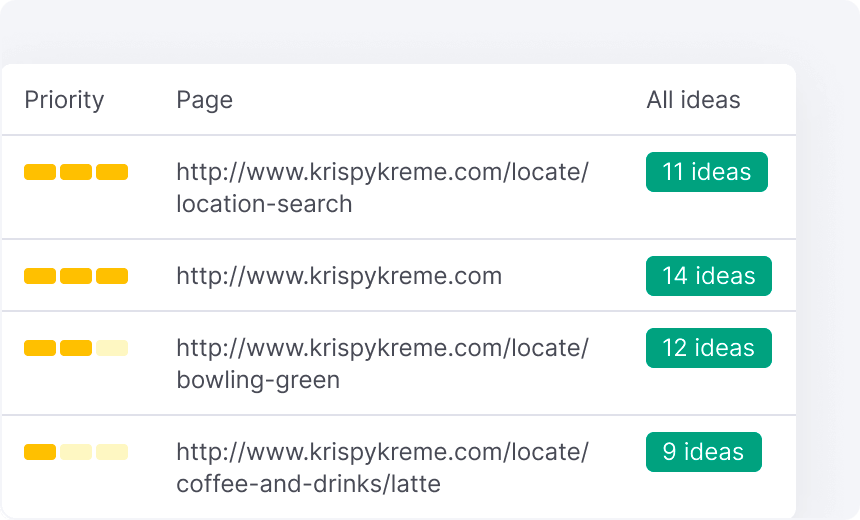Insights into What Is Ruled Out a Default Medium in Google Analytics
Insights into What Is Ruled Out a Default Medium in Google Analytics
Blog Article
Introducing the Unconventional Mediums in Google Analytics Beyond Default Settings
In the world of electronic analytics, Google Analytics stands as a foundation for companies seeking to comprehend their online visibility. While default setups provide important insights, the real depth of understanding lies in discovering the unconventional tools that often go undetected. By venturing past the surface area and diving into the ins and outs of social networks data, e-mail project performance, referral website traffic sources, direct web traffic patterns, and custom-made network collections, a treasure of information awaits those going to embrace a more nuanced strategy. However, what lies under these unconventional mediums might simply redefine how businesses regard and strategize their on the internet campaigns.

Leveraging Social Media Site Insights
Occasionally neglected, yet greatly important, is the practice of leveraging social media insights within the world of Google Analytics. By incorporating information from platforms like Facebook, Twitter, Instagram, and LinkedIn into Google Analytics, businesses can obtain a much deeper understanding of their target market and the performance of their social media campaigns.
Via this combination, online marketers can track and analyze individual habits on their internet site that stems from social media sites systems. They can determine which social networks networks are driving the most traffic, which material is reverberating with the target market, and which projects are transforming one of the most leads. This insight permits data-driven decisions to maximize social networks methods and boost overall advertising performance.
In addition, by combining social networks understandings with Google Analytics, services can produce more targeted and individualized campaigns - what is not considered a default medium in google analytics. They can make use of demographic details, rate of interests, and online behaviors gathered from social media sites to refine their audience division and provide customized messages that resonate with specific client groups. This targeted approach can bring about greater involvement, enhanced conversions, and inevitably, enhanced roi
Uncovering Email Campaign Efficiency
Uncovering Email Campaign Performance entails analyzing key metrics and performance signs to examine the effectiveness of email advertising initiatives. When delving into e-mail campaign efficiency, it is essential to analyze metrics such as open prices, click-through rates, conversion prices, and unsubscribe prices. Open up prices show the portion of recipients who opened up the e-mail, giving insight into the effectiveness of subject lines and sender names. Click-through rates determine the portion of recipients who clicked on links within the e-mail, revealing interaction levels. Conversion rates track the percent of receivers who finished a desired action after clicking on a web link in the email, such as signing or making an acquisition up for a newsletter. Unsubscribe rates highlight the number of recipients that opted out of getting more emails, shedding light on email content high quality and importance. By analyzing these metrics, online marketers can adjust their e-mail projects for much better engagement and efficiency.
Analyzing Reference Traffic Resources
After assessing the efficiency of e-mail campaigns through key metrics such as open rates and conversion prices, the following vital step is examining referral traffic resources in Google Analytics to recognize where internet site site visitors are coming from and exactly how they engage with the website. Referral traffic resources refer to the internet sites that route customers to your website with clickable links. By delving right into this information, companies can obtain understandings right into which external systems are driving web traffic to their website, whether it be social media systems, partner sites, or on the internet directories.
It helps businesses identify high-performing recommendation resources that add dramatically to site web traffic and conversions. Google Analytics provides in-depth records on referral web traffic, permitting organizations to track the performance of each reference source precisely and make data-driven decisions to improve their on-line existence.
Checking Out Direct Web Traffic Patterns
Exploring the direct traffic patterns in Google Analytics gives beneficial insights right into individual actions and the performance of campaigns - what is not considered a default medium in google analytics. Straight website traffic refers to visitors that arrive on a site by directly typing the link into their internet browser, using bookmarks, or clicking on untagged links. Understanding direct website traffic patterns can help marketing professionals review the effect of offline marketing efforts, brand recognition, and the efficiency of word-of-mouth referrals
By diving into straight web traffic information, organizations can uncover vital info concerning individual intent and brand name commitment. Assessing the habits of direct visitors, such as the web pages they visit, the time invested on website, and the conversion price, my company can offer a deeper understanding of individual interaction and the overall performance of the website in converting site visitors right into consumers.
In addition, tracking straight website traffic patterns my latest blog post with time allows businesses to determine patterns, seasonality effects, and the success of particular campaigns or promotions in driving direct visits. This information can then be made use of to fine-tune advertising strategies, enhance website material, and enhance the general user experience to take full advantage of conversions.
Utilizing Personalized Channel Groupings
Utilizing custom network groups in Google Analytics enables businesses to categorize and assess their site web traffic based on certain criteria, supplying valuable insights for optimizing advertising approaches. Customized network groups allow firms to develop their own tailored groupings of web traffic resources, such as social media, natural search, email projects, and reference traffic. By defining these collections, organizations can acquire a deeper understanding of just how various marketing channels add to their internet site web traffic and conversions.
This attribute is particularly beneficial for services with varied advertising and marketing techniques across different systems. As an example, a company running both paid and organic social networks projects can separate between both to examine their specific efficiency properly. Furthermore, custom-made channel groups can assist recognize any kind of forgotten or underestimated website traffic resources that might be driving useful interaction.
Final Thought

By venturing past the surface and diving right into the intricacies of social media data, e-mail campaign performance, reference web traffic resources, straight web traffic patterns, and custom channel groups, a prize trove of info waits for great site those willing to accept a much more nuanced strategy. They can identify which social media channels are driving the most traffic, which material is reverberating with the audience, and which campaigns are converting the most leads.After examining the efficiency of e-mail campaigns through essential metrics such as open prices and conversion prices, the following crucial step is evaluating recommendation website traffic resources in Google Analytics to recognize where site visitors are coming from and exactly how they communicate with the website. Personalized network groupings allow business to develop their very own customized groupings of traffic resources, such as social media, organic search, e-mail campaigns, and reference traffic. By leveraging social media insights, uncovering e-mail project efficiency, assessing reference website traffic resources, checking out direct web traffic patterns, and utilizing personalized network groups, marketing professionals can obtain beneficial understandings into their online presence.
Report this page